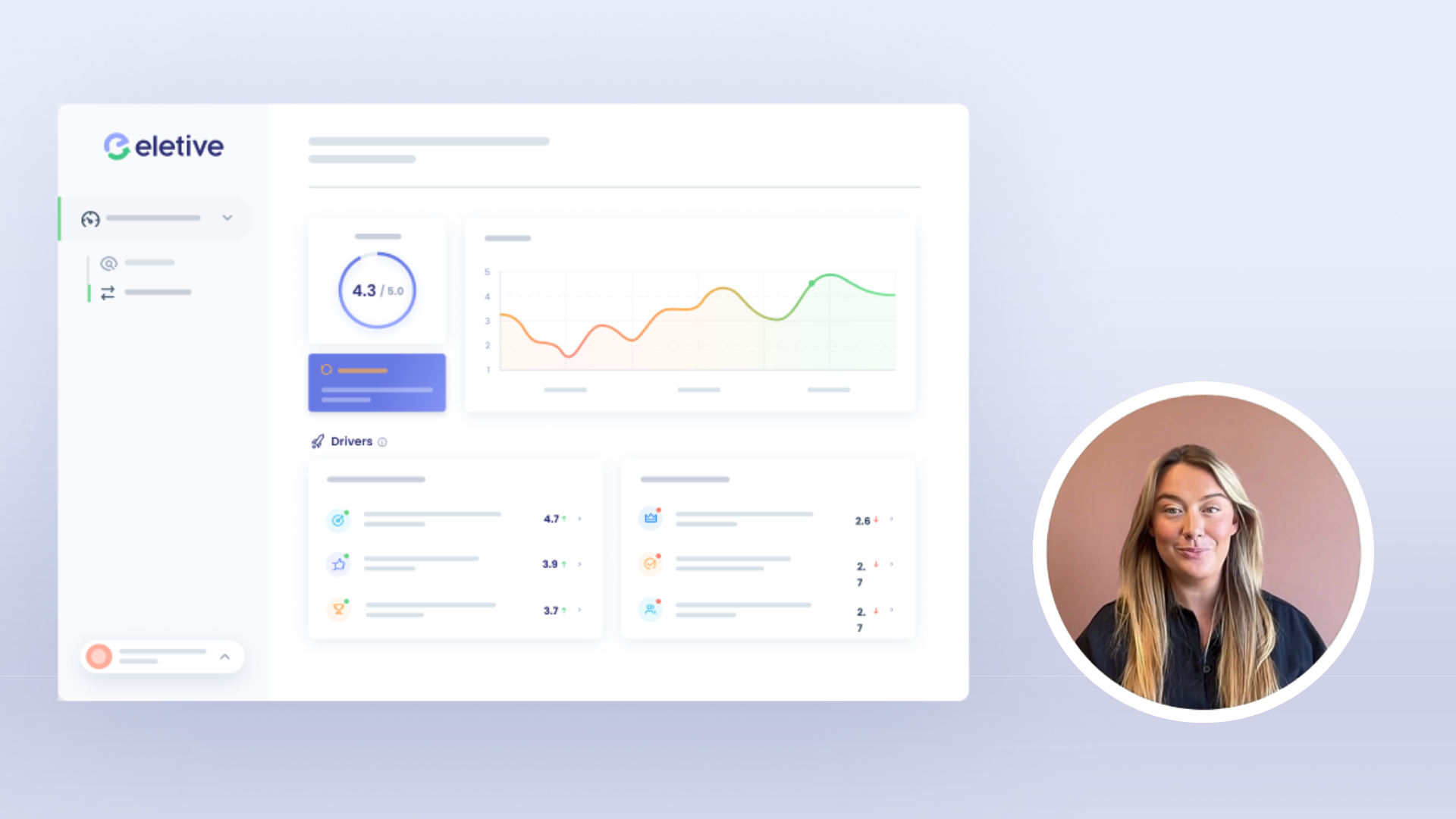Performance appraisals, also known as performance reviews, are an essential part of performance management. They are tools for measuring employee performance, setting goals and objectives, and providing feedback to support productivity and improvement.
When done correctly, the performance appraisal process encourages an open dialogue between employers and employees, resulting in better employee engagement and ultimately, better outcomes. But performing appraisals can be a complex and time-consuming task, with many steps in the process.
This article will guide you through the entire appraisal process — from preparation right through to communication — to maximise the effectiveness of your performance appraisal.
What is a performance appraisal process?
Before diving into the "how" of performance appraisals, let's define what this means. The process of performance appraisal is a system for evaluating and assessing employee performance, with the aim of promoting their professional development.
A performance appraisal typically begins with the employer setting objectives together with their employee, to measure how they’re carrying out their duties and responsibilities. The starting point is to establish performance standards and performance expectations. Then the process ends with an annual review of the employee’s performance and detailed feedback from both the employer, the employee, and, sometimes, 360 feedback from peers and direct reports.
The performance appraisal process is an important tool for employers to ensure that their employees are meeting their expectations and goals. It also provides employees with an opportunity to reflect on their performance and identify areas for improvement. The performance appraisal process is essential for evaluating performance, and can also be used to recognize and reward employees for their hard work and dedication.
:format(png)/f/288714721386412/8bc74e1c86/ewebinar__1_.png)
Increase engagement with Eletive
The six steps of the performance appraisal process
Establish performance standards
Communicate performance standards
Measure actual performance
Compare actual performance to performance standards
Discuss the results and give feedback
Decide on a follow-up plan
Eletive-performance-appraisals:format(png)/f/288714721386412/0de38d21c8/appraisal_2.png)
Performance appraisal best practices
There are a few things that are good to keep in mind when planning the performance appraisal process. This includes:
Clear documentation
Constructive feedback
Continuous communication
Let's have a closer look at what that means, and why these things are important.
Clear documentation
It’s important for the appraisal system to be well documented so that all parties involved can refer to it at any time. The documentation should detail who is responsible for managing the appraisal process as well as when it will take place. This will make it easier to accurately track the performance evaluation and review employee progress. It's also essential that the job description for each employee is well documented.
Constructive feedback
Constructive feedback is key to making an appraisal valuable. It helps foster open communication between employers and employees and provides a platform for sharing ideas and advice. When offering feedback, it’s important to focus on results-based statements—discussing how a behaviour impacted the final outcome. Consider using a specific example when giving feedback in order to more accurately paint the picture with words, rather than merely giving broad generalizations.
Continuous communication
Regardless of what performance appraisal method is used, communication is crucial for keeping up with the progress of an employee throughout the appraisal process. Meetings should be set up regularly (at least once a quarter), both for performance reviews and for individual feedback sessions and one-to-one meetings. This ensures that goals and expectations are clearly laid out and understood by both employers and employees. It’s usually beneficial to have feedback sessions over the phone or face-to-face to ensure that everyone involved is aware of all the outcomes discussed.
Leveraging data in the performance appraisal process
Data is an invaluable tool when performing appraisals. Collecting quantitative data (such as KPIs or customer satisfaction scores) covering key areas of responsibility helps ensure that appraisals aren’t made subjectively, but rather objectively, providing a more accurate reflection of true performance.
Other forms of data such as qualitative feedback from managers or supervisors can also be useful in order to gain insight into an employee’s achievements or strengths over a specific period of time.
360 performance appraisal
360 appraisal is a process where employees receive anonymous feedback from the different people they interact with at work. A 360-degree appraisal allows managers, peers, and direct reports to give feedback on the performance and behaviour of an employee.
Eletive-employee-development-with-360-feedback:format(jpeg)/f/288714721386412/8b9b39f859/360_appraisal.jpg)
Related reading: What is 360 appraisal – and how can it improve performance?
360 appraisal, also known as 360-degree appraisal, 360-degree feedback, 360 surveys, multi-rater appraisal, or 360 assessment, is a powerful tool both for individual and professional development. When executed well, 360 appraisals can help managers and employees better understand their strengths and weaknesses, and provide guidance on how to improve future performance.
While 360 feedback surveys should not be used as actual performance reviews, they can be a very valuable complement to the employee performance appraisal process.
Related reading: 360 feedback and performance reviews
Eletive-performance-management-360-spiderchart:format(png)/f/288714721386412/ad63fa98c3/360-rating_spider_1.png)
Maximising team performance through appraisals
Organisations can maximise group performance by taking advantage of their appraisal process. It’s important to set team goals that align with business objectives that everyone agrees on—this allows all teams to work together towards a common goal, rather than working in isolation.
In addition, managers can use team-based milestones to track progress and motivate everyone involved. If a team meets its objective before its deadline, managers should consider giving them recognition (through rewards or bonus schemes) to further incentivise collaboration between teams.
Related reading: OKRs – A complete guide to Objectives and Key Results
OKR-objectives-key-results:format(png)/f/288714721386412/549028e053/okr.png)
Performance appraisals, goal setting, and continuous improvement
One of the main goals of appraisals is to drive continuous improvement over time. To ensure this goal is achieved, it's important to put mechanisms and processes in place to monitor performance levels.
This includes setting regular check-ins and one-to-one meetings with employees throughout their appraisal cycle. This helps employers and managers understand how their employees are performing and detect any issues early, to be able to proactively address them before they become larger problems.
The Human Resource team can facilitate one-to-one meetings by providing training, guidelines, and staff meeting templates.
Related reading: Template for one-to-one staff meetings with example questions
Different types of performance appraisal processes
There are different types of performance appraisal methods, that can be combined to best measure the overall performance of the employees. Examples of employee performance types include:
Evaluation: Traditional reviews focus on evaluating an employee’s work in terms of core elements such as attendance, attitude, punctuality, or customer service.
360-degree reviews: Reviews that include feedback from peers of the employee being evaluated, in addition to managers and colleagues.
Self-evaluation: Reviews that focus on self-assessments from the employee regarding their role and results.
Checklist: Reviews that include specific criteria which must be met in order for employees to receive positive ratings.
Rating scales: Where both employees and managers rate different aspects of the performance during the year.
Balanced Scorecard: Reviews that incorporate both quantitative (e.g. goals achieved or KPIs) and qualitative (e.g. communication or collaboration) metrics into their evaluation.
It’s important to note that no two businesses will have the same needs or objectives; different performance appraisal processes may be more appropriate depending on the organisation’s size and objectives.
At its core, a performance appraisal is an opportunity for employees and employers to sync around actual performance in relation to expected performance. If done correctly, it should help both employer and employee reach their full potential — whether it be career development or organisational growth. It's therefore essential that sufficient planning goes into the performance reviews, to ensure both individuals and the organisation gets as much value as possible from them.
We’d love to show you what Eletive can do for your organisation. Get in touch to schedule a free demo, tailored to your specific industry. Book a demo!

























:format(jpeg)/f/288714721386412/91567ff039/blog-the-performance-appraisal-process-a-complete-guide-hero_media.jpg)
:format(png)/f/288714721386412/70a5012076/blog-eletive-secures-growth-investment-from-accel-kkr-hero_media.png)
:format(jpeg)/f/288714721386412/a906f14dff/blog-hr-trends-2026-ai-data-and-employee-experience-hero_media.jpg)
:format(png)/f/288714721386412/9f8e0a2347/blog-beyond-the-hype-the-new-rules-of-people-success-in-a-global-ai-powered-hero_media.png)